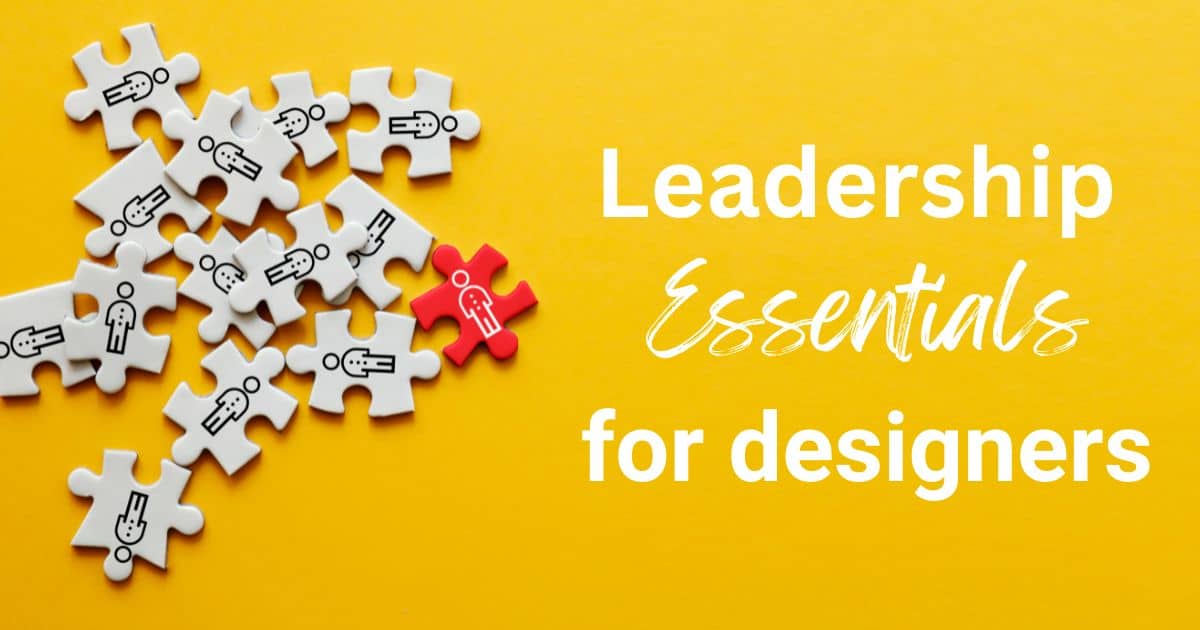Strong communicators know the human brain is hardwired to respond to stories. Stories light up the brain’s sensory cortex. They also help ensure a message sticks with its intended audience.
In fact, cognitive psychologist Jerome Bruner said we are 22 times more likely to remember a fact when it’s shared within the context of a story.
But stories aren’t just for remembering facts or figures; they have a place in design contexts as well. Without a story around your message, cross-functional partners and business stakeholders will create their own meaning. That’s why it’s important to be intentional.
Strategic storytelling can help you elevate your influence as a designer and inspire action in your organization. Consider these takeaways for design scenarios where storytelling is most powerful.
1. Thought Leadership
Highlight the conflict you’ve resolved if you want another team to adopt your methodology or bring colleagues around to your way of thinking. Integrate the key data points or the reasons why your approach works into a larger narrative to make those reasons stand out and the data points more memorable.
2. Performance Reviews
Showcase the impact you’ve had through a concise, powerful story. Whether your end goal is getting valuable feedback or a coveted promotion, go beyond presenting your boss with a list of completed projects. Detail the challenges you overcame and weave a narrative arc around how your solutions made a difference for users—and maybe even the business at large.
3. Research Readouts
Make one user the protagonist of your story—walking your colleagues through particular challenges they face and why those challenges are relevant. Once you hook your audience with a story, you can branch out further. Storytelling can illuminate research insights and user testing results in new ways, helping as you ideate on how to implement user feedback or work to align various stakeholders.
4. Future Vision
Create a character based on a persona—someone people can root for—to explain your vision. Consider the example of a busy, stressed-out parent who doesn’t have time for household chores. In the future vision, this parent is thriving, healthy, happy and able to spend quality time with their kids. That’s a powerful image that makes the case for your product: an app that lets users schedule household service providers.
5. Design Value
Share the story of how a particular user’s experience has improved because of a design change. Perhaps it’s because they’re spending less time on one particular task, they’re able to accomplish other things and be more effective at work. What a tribute to the impact of design—and a powerful way to explain why users love a new feature.
6. Techniques and Best Practices
Articulate the problem you’re solving and paint a picture of the experience your team will have when they implement a new technique. Teams may or may not be hungry for a change in process, and simply detailing a new approach isn’t as compelling as a story.
7. Product collaboration
Lean on character and plot to ensure cross-functional collaborators are working from a shared understanding of user pain points and goals. This will help the team avoid the trap of tacking on features that don’t actually support the resolution of the central conflict (a user achieving their goals).
8. Project review
Craft a story about what your team accomplished at the close of a design project. Share how a persona’s goals were accomplished thanks to the work you did. Assessing the final results with stakeholders and gaining the feedback you need to move forward will be all the more effective.
As you encounter these scenarios at work, remember the power of strategic storytelling. A well-crafted story can help you expand your impact on your organization, your team and the product you’re building.
* * *
Want to learn how to harness the power of storytelling—no matter the scenario—and get practice with crafting strategic narratives? Pragmatic Institute’s new course, Influence Through Storytelling, provides the tools and techniques you need to enhance collaboration with stakeholders, build influence, and change attitudes and behaviors through storytelling.
Author
-

The Pragmatic Editorial Team comprises a diverse team of writers, researchers, and subject matter experts. We are trained to share Pragmatic Institute’s insights and useful information to guide product, data, and design professionals on their career development journeys. Pragmatic Institute is the global leader in Product, Data, and Design training and certification programs for working professionals. Since 1993, we’ve issued over 250,000 product management and product marketing certifications to professionals at companies around the globe. For questions or inquiries, please contact [email protected].








